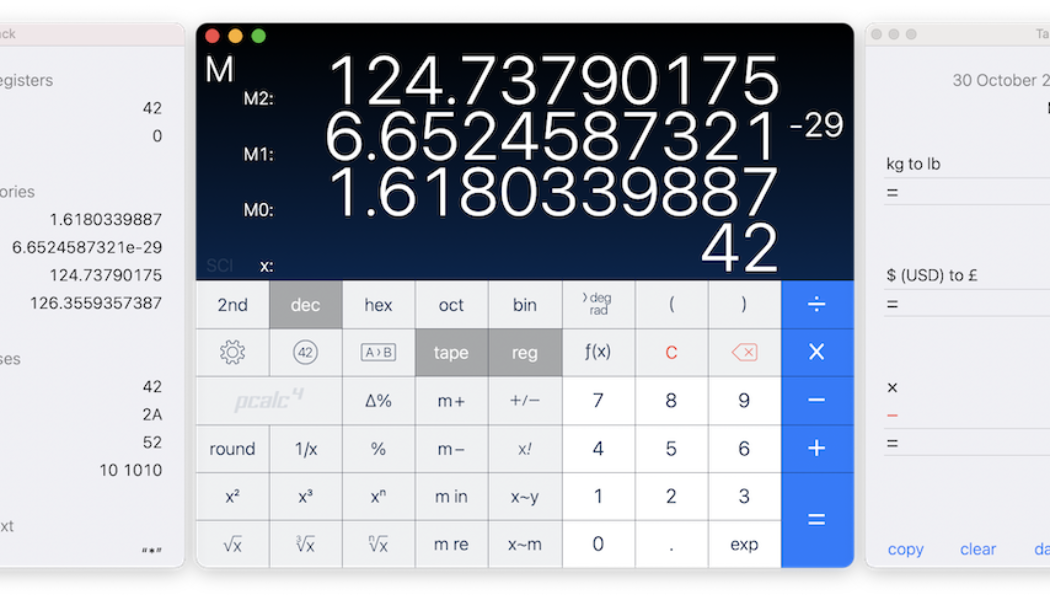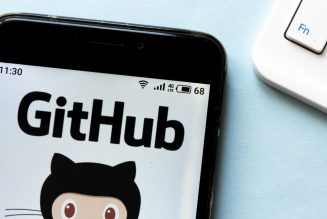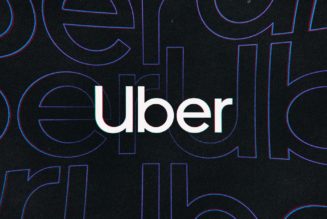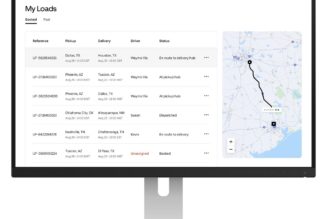James Thomson started developing PCalc in 1992 as a way to learn to program for the Mac. Since then, he’s rewritten the calculator app multiple times to feature new UI changes, ported it to the iPhone, Apple Watch, and Apple TV, and maintained it for the Mac over the decades.
But PCalc’s popularity — let alone financial success — is an unlikely one. After all, Thomson doesn’t just have to sell customers on the idea of paying for a calculator app; he has to convince them to spend $10 on his app in a world where Apple already offers its preloaded Calculator app for free on every iPhone and Mac.
Apple bundles each iPhone with over 35 applications, spanning web browsing, email, weather, clock, calendar, camera, music, and virtually every other major part of the phone. It also has a huge home-field advantage for most of its apps, setting them as the default, with no way to change to any other option (something that the company is currently dealing with in a number of antitrust cases).
That leaves developers like Thomson in a tough spot, forced to simultaneously work with Apple to be distributed through its App Store, while still trying to outdo Apple’s own default apps with smaller — sometimes even one-person — teams. And yet, despite those challenges, many alternative apps have not only survived, but thrived in the cutthroat world of the App Store. The key is standing out: creating a better, richer experience than the more pared-down default apps provide, by offering apps with more advanced, unique, or different features than Apple’s vanilla alternative.
:no_upscale()/cdn.vox-cdn.com/uploads/chorus_asset/file/22804663/4.8_Hero_small.png)
“I’ve always notionally competed with the built-in apps since day one, so I try not to stress out too much about it,” Thomson says. “Apple has to make relatively straightforward apps that can be easily used by a billion or so people, so there’s a lot of things they can’t or won’t do. You just need to go a bit deeper and build something that will appeal to a smaller number of people.”
It’s a similar strategy taken by popular alternative camera app, Halide, which offers far more advanced features than Apple’s own camera app. Halide co-founder Sebastiaan de With says, “We try to target our products to a market that Apple would be foolish to chase. For example, exposing manual exposure controls would alienate most of their very casual audience.”
One way to reach an audience, though, is simply by making apps that add the features you yourself were looking for. “When we launched, Halide was a passion project. We were two friends that loved photography and our dream was to make a camera app that was perfect for us,” says de With.
That logic applies to smaller apps, too. Mustafa Yusuf, the developer of to-do list app Tasks, tells The Verge he was motivated to create his app because the default iOS Reminders app just didn’t have the features he wanted.
“When I started [developing apps], as a to-do list, it gets really messy very quickly,” Yusuf says. “A feature cannot just be ‘to-do’ and done — there are a lot of steps in between and there was no way for me to do that in an orderly or a neat fashion, so it got really messy really quick, and then I just resorted to pen and paper.” So he created his own app, Tasks, which was built around offering the kinds of sub-tasks and filtering that he was looking for.
:no_upscale()/cdn.vox-cdn.com/uploads/chorus_asset/file/22804688/2_Up___Pro_Tools.png)
There are also other areas that give the more niche apps an edge. While Apple tends to only update its apps with major features once a year as part of its annual iOS releases, third-party developers can move at a much more rapid pace, adding more features and updates throughout the year.
That doesn’t mean that Apple events are carefree. The company is infamous for its history of “Sherlocking” features and integrating them into its own apps. “I would be lying if I didn’t hold my breath every time there was a WWDC keynote,” Thomson says, noting the possibility that Apple may one day finally make an iPad calculator app. And de With notes that some Halide features have shown up in Apple’s Camera app later on, like its shutter animation. “It could be great minds thinking alike, or just a nice nod to us. Who knows!”
One challenge facing alternative default apps, however, is pricing. The App Store in general has been in a race to the bottom almost since its inception; in 2021, paid apps are a rarity among big names, and the top-grossing apps on the platform are — without exception — free apps with either subscriptions or in-app purchases.
And for apps like Tasks or Halide, which have to outdo their free alternatives, that’s also meant having to face the reality of subscriptions and free trials. “I cannot imagine having a paywall to even try the app out — if I had that barrier to entry, people just go solo, because there’s just a ton of free alternatives,” says Yusuf. “Forget Apple itself, right, like Google has its own thing, Microsoft has its own thing going on.”
:no_upscale()/cdn.vox-cdn.com/uploads/chorus_asset/file/22804678/EnrzFk1WMAY_vwG.jpg)
Subscriptions are a double-edged sword, however. They provide developers with recurring, steady revenue that they can rely on — there’s a reason that they’ve increasingly cropped up among apps like Halide, Carrot Weather, and Fantastical, which all aim to offer alternatives to Apple’s default apps. But they’re also a tougher sell to customers, who tend to be saddled with higher costs over the long term.
It’s one of the reasons that PCalc still maintains its upfront price, despite experimenting with a free version with in-app purchases a few years ago. “As a developer, I’d really love the recurring income from a subscription model, but I don’t honestly think it’s a great fit for a standalone utility like PCalc that doesn’t have any online infrastructure to maintain,” Thomson says.
The truth of the matter is, though, that even if things dramatically change on iOS and Apple were to turn around and announce tomorrow that it would offer full access for any app to be set as a default, it seems unlikely that apps like Tasks, Halide, or PCalc will ever approach the popularity of the built-in options. Free is free, and for millions of iPhone customers, the basic apps that come with their phones are enough for the job; good is the enemy of great, especially when “good enough” comes preinstalled.
But the sheer size of platforms like iOS (and Android, which offers slightly more options to developers when it comes to competing with defaults) means that even in the more limited circumstances, there’s still plenty of room for these alternate apps. As Thomson points out, there’s over a billion Apple devices out there. “Even 1 percent of that billion is still a pretty huge market for an indie developer, and you can hopefully find an audience.”
And if the day comes when Apple relents and gives developers the chance to set their apps as defaults and face its own even more head-on (as has already happened with services like email and web browsers in iOS 14), at least some developers will leap at the chance.
“Yes. A million times yes,” says de With to the idea of making Halide a default. “If it were an option on the table, we would jump through whatever hoops necessary — even if that means adjusting our app for these new considerations.”









